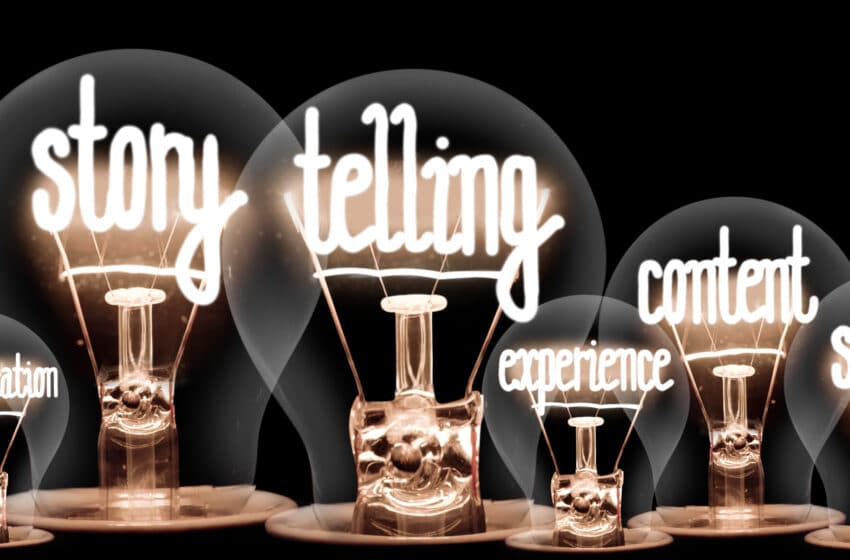An Innovative Approach to Sharing Real Customer Success Stories

Traditional case studies no longer cut it. Here’s what to use instead.
While case studies continue to be high on sales and marketing’s list, all indications are that this communication vehicle delivers limited value in the buying process. Why? Traditional case studies, by their very nature, have limited application and activation in today’s omni-channel customer experience. They may be great as a download from your website, or a leave-behind in certain selling situations, but they do little to elevate the Voice of the Customer and storytelling in daily sales activities or throughout the buying process. This article includes a few insights as to why this is the case.
It’s Just Part of the Story
Think about it. Most case studies are one-dimensional. They speak to a single aspect of the company-customer relationship, and that is usually the financial impact. What about the rest of the story? What about a customer’s emotional connection with your brand? Or the relationships they have formed with executives and employees? The expert advice and knowledge you have delivered? And where’s the backstory? Where are all the other dimensions of this customer’s experience? A case study focuses on only one narrow chapter and leaves the rest of the story on the editing room floor.
The Format Inhibits Usability
Case studies are usually contained within a one- or two-page document and are written in the typical challenge-solution-result format. When was the last time an executive actually used a case study to tell a customer story? When was the last time a sales representative read a case study in a selling situation? The format restricts how the story can be told and limits the storytelling content, application, and usability.
The True Essence of Storytelling Is Missing
Case studies are dry. Limited to marketing messages and canned quotes, they rarely achieve the purpose of true storytelling. That purpose is to paint a vivid, emotionally engaging picture that puts your audience in the middle of the story. The story should capture the imagination of the target audience and make them think, feel, and imagine: “That could be me.” “I want to feel that way.” “We need to experience that.”
Case studies simply do not provide stakeholders with actionable storytelling source material and content they can use in real-world business situations. Case studies will not create an army of storytellers across your organization or elevate the Voice of the Customer throughout the buying process.
There is a better way to share customer stories with your target audience. There is a more engaging and effective way to elevate the voice of the customer across a wide range of communication vehicles and conversations.
It starts by acknowledging that traditional case studies are not stories and that stakeholders need actionable storytelling content they can share in daily work activities, during the buying process, and throughout the customer experience. It starts with rethinking the way real customer stories are captured, developed, and delivered.
Forward-thinking companies are moving away from the old-school case study format and creating powerful customer experience Storytelling Platforms. In contrast to a conventional, static case study, a Storytelling Platform is a rich, dynamic set of content that can be shared in every customer-facing situation. It can be shared orally or visually and customized to the situation, and it dives deeper into the elements of story than a plain case study.
Storytelling Platforms include content that can be easily infused into stories your team can share in everyday conversations and communication vehicles. These content elements include:
1. Complete Customer (Business) Profile
Storytelling Platforms include enough context on the customer to create a compelling story. They provide the storyteller with the facts they need to have a real-world conversation about the customer and the customer’s business. They can use these facts to deal with questions and comments from prospects, like:
Tell me a little more about their business. How long have they been in business? Tell me about the executives at the company. What types of customers do they serve? Tell me more about what they do.
Providing stakeholders with detailed profile information and context on the actual customer’s business is essential for them to feel confident telling real, authentic stories with prospective clients.
2. Detailed Character Profiles
When was the last time a case study included details about the characters involved in the story? They don’t. That’s a shame, because we all know characters make or break the story. How well we know, connect with, and understand the characters determines if we will care about the story . . . or not. That’s why every Storytelling Platform includes detailed profiles of each character involved in the story. This is content storytellers can share to ensure their audience can connect with the characters involved in the story personally and emotionally.
3. Complete Customer Relationship Profile
Speaking of context, case studies usually only mention the customer’s company name and the products and services they purchased. What about other dimensions of the customer relationship that would make the story more rich, colorful, and meaningful? Things like how long they have been a customer, the executives your company works with every day, the different ways they use your products and services to create value for their business, etc. These are important elements of the story that provide the storyteller with the content they need to paint a complete picture of the company’s relationship with that customer.
4. Multidimensional Story Arcs
The biggest difference between a Storytelling Platform and a case study is the way the content is developed and packaged. A platform is written to provide storytellers with an unlimited engine of useful content. Packaged in a way that provides maximum flexibility, it allows storytellers to share pieces, parts, and variations of the story in a variety of ways, both in written communications and conversations. That is why a cornerstone of the Storytelling Platform is the Story Arc. A Story Arc captures the backdrop, supporting facts, and chronological events that took place in the customer experience. It breaks down the story into specific phases of that customer’s journey: Situation, Trigger, Quest, Surprise, Critical Decision, Climax, Reversal, and Resolution. This storytelling structure allows storytellers to share the end-to-end customer story, and yet pick and choose the dimension of the story that is most relevant to their specific situation.
Each Story Arc is captured from multiple dimensions of the customer experience, providing the storyteller with ultimate control and flexibility to take the conversation in the direction his or her audience wants to go.
4 DIMENSIONS OF CUSTOMER EXPERIENCE STORIES
Emotional Dimension
This dimension of the story includes content that paints a picture of the emotional connections and relationships the customer has formed with your company. Real, true, and emotive stories about the connection the customer has formed with your company, team members, and brand.
Financial Dimension
The financial dimension shares the story that captures the meaningful and material results you have delivered for the customer. It also includes storytelling content, quotes, facts, and figures that bring the financial impact of your relationship to life.
Relationship Dimension
Part of telling customer stories is explaining the deep, meaningful relationships they have formed with specific individuals at your company. More specifically, how they feel about your executives and employees. This dimension of the story illustrates how individual team members have impacted your customer’s life, career, and business.
Solution Dimension
This dimension speaks to how your products, services, and solutions have helped the customer succeed personally and professionally. It highlights in detail how they used your solution to deliver business value, improve performance, and position their team for future success.
As you can see, there are significant differences between a case study and a Storytelling Platform. The main difference is that your employees can use a Storytelling Platform to elevate real customer stories in almost every customer-facing situation.
Think of it as a powerful engine that fuels endless storytelling opportunities across a wide range of communication channels and vehicles:
- Selling conversations
- Business development meetings
- Executive presentations
- Media and analyst pitches
- Multichannel marketing programs
- Content development campaigns
- Event marketing materials
- Internal communication programs
- Employee engagement activities
The days of static, one-size-fits-all cases studies are behind us. The new way to package and share stories is multidimensional—more specifically, multidimensional Storytelling Platforms that every employee can use to activate compelling customer stories throughout the buyer journey. Stories that will measurably improve customer engagement, sales closure rates, and revenue growth.



